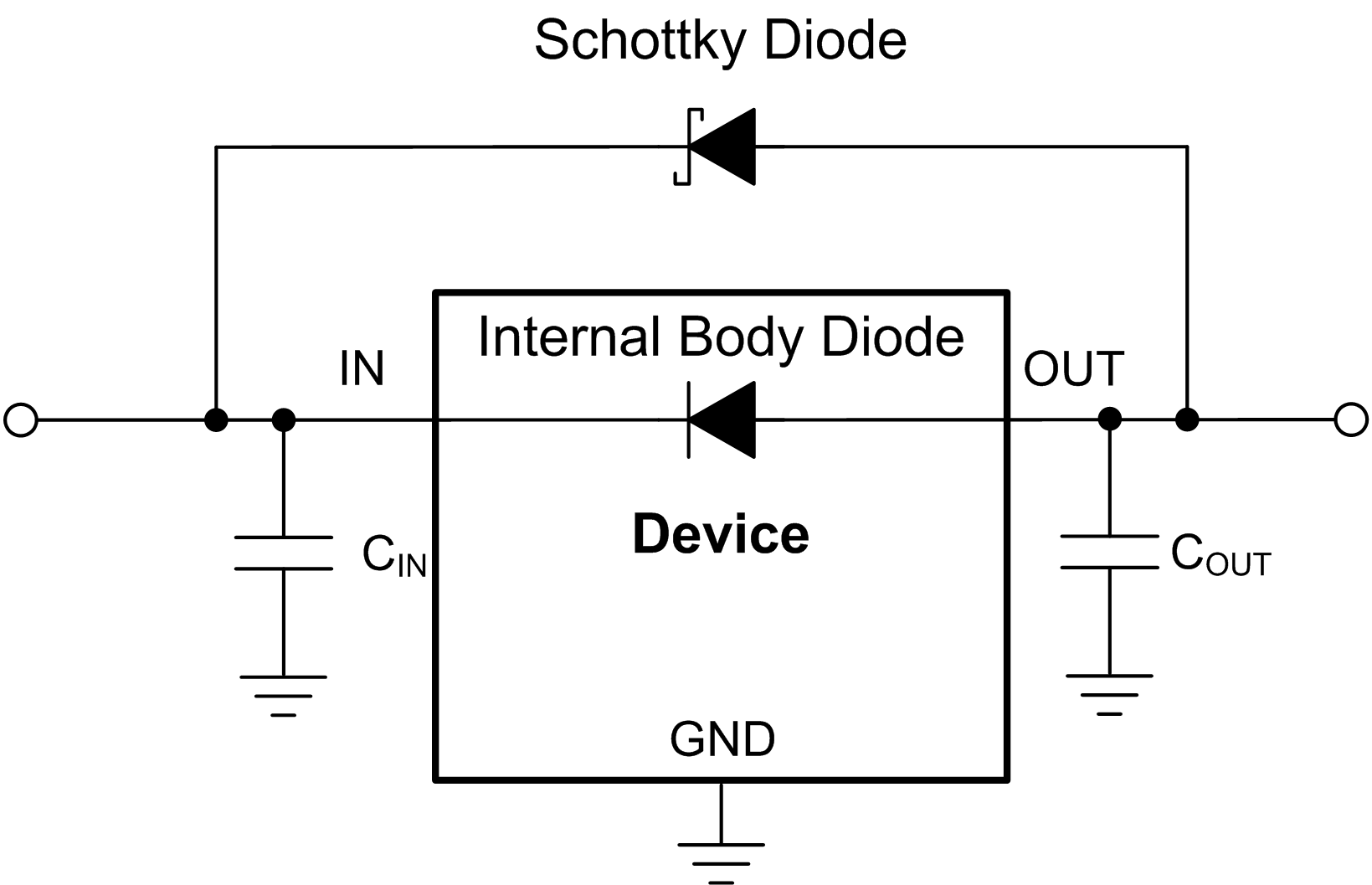JAJSGP0D December 2017 – July 2021 TLV767
PRODUCTION DATA
- 1 特長
- 2 アプリケーション
- 3 概要
- 4 Revision History
- 5 Pin Configuration and Functions
- 6 Specifications
- 7 Typical Characteristics
- 8 Detailed Description
- 9 Application and Implementation
- 10Power Supply Recommendations
- 11Layout
- 12Device and Documentation Support
9.1.4 Reverse Current
Excessive reverse current can damage this device. Reverse current flows through the intrinsic body diode of the pass transistor instead of the normal conducting channel. At high magnitudes, this current flow degrades the long-term reliability of the device.
Conditions where reverse current can occur are outlined in this section, all of which can exceed the absolute maximum rating of VOUT ≤ VIN + 0.3 V.
- If the device has a large COUT and the input supply collapses with little or no load current
- The output is biased when the input supply is not established
- The output is biased above the input supply
If reverse current flow is expected in the application, external protection is recommended to protect the device. Reverse current is not limited in the device, so external limiting is required if extended reverse voltage operation is anticipated.
Figure 9-1 shows one approach for protecting the device.
 Figure 9-1 Example Circuit for Reverse Current Protection
Using a Schottky Diode
Figure 9-1 Example Circuit for Reverse Current Protection
Using a Schottky Diode